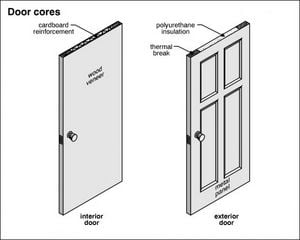Manual transmissions are fun. Not to mention they grant the driver a greater control over his or her automobile.
They may even keep you more focused on the road. After all, it’s a bit harder to talk on a cell phone or eat fast food when you’re using both hands and both feet to move yourself along.
Here are a few simple steps to help those just starting out master the three-pedaled beast known as the manual (or standard) transmission.
Step 1:
Relax.
A good amount of learning is mental, and if you are too tense you will never be able to drive smoothly. When you are first starting out it’s a good idea to find a large, flat parking lot with a minimal amount of traffic. It is much less nerve wracking to master a 5 speed when there isn’t anyone waiting behind you at a green light.
As a general rule, average economy cars are easier to drive than a sports car. The clutch pedals are often easier to modulate, and the lack of power will keep you from accidentally flying forward as you try to take off in first gear.
It will be to your benefit to find a patent teacher. Not only will they be good company, they can give you constructive criticism and help fix bad tendencies before they become bad habits.
Step 2:
Get to know the car.
It sounds a little silly, but it helps.
Adjust the seat so you can press all three pedals to the floor without a problem. This sounds like common sense, but it is important. If you don’t make adjustments you may not be able to press the clutch as far as you need to shift. This means you could grind a gear any time you try to move the selector.
While that wouldn’t immediately hurt anything, it does make a rather unpleasant noise. If you are borrowing the car or the owner is sitting in the passenger seat they probably won’t appreciate the unintended metal-to-metal contact occurring under their hood.
Start by shutting the car off and pressing the clutch pedal to the floor. Move the selector into each gear until you can go from first to fifth smoothly and easily. If you are in a parking lot odds are you won’t be going any higher than second or third, but it will give you an idea of how each gear feels.
Step 3:
Making sure the car is in neutral, (no gears are engaged) press the clutch to the floor and start the engine. At this point you can also release the emergency brake, just make sure you have your right foot on the brake pedal as you may begin to move before you are ready.
Unlike an automatic, a manual transmission will not move the car as soon as you release the brakes. In fact, if you are on a steep enough hill, you may begin to roll. This is why starting out on flat pavement is so important.
Beginners may panic if they feel the car is out of their control. If the car is rolling backward, odds are it isn’t moving anywhere near as much as you think it is, so keep a level head and you will have no trouble.
Step 4:
Now that the mental preparations are complete, it’s time to drive. With the clutch pressed to the floor move the shifter to first gear.
Once the gear is engaged slowly begin to lift your left (clutch) foot. At the same time gently press the gas with your right foot until the car starts to move forward. It will take a few tries to really get a feel for how much gas you need to supply and at what pace to move you clutch foot, so be patient and pay attention to how the car responds to your actions.
If you lift your clutch foot too fast or don’t give enough gas the car will probably stall. If this happens don’t worry you won’t hurt anything. Everyone stalls at some point, and it won’t be the last time so don’t get discouraged.
The other extreme occurs if you give the car too much gas or ride the clutch too long. Either of these will make the takeoff feel jerky and could even result in a bit of tire noise.
You will feel a point in the clutch pedal travel at which the clutch is totally engaged. This is different for every car, but you will eventually know it when you find it. Once you have passed the release point in any shift you can totally let go of the clutch and focus on the gas.
The most important (and hardest) part of learning is first gear. Keep this fact in mind if you find yourself struggling. Once you have mastered first the rest of the gears are simple.
For example, to shift from first to second all you have to do is release the gas pedal, press the clutch to the floor move the shifter into second gear. Then, evenly allow the clutch to rise until you pass the point at which it engages the flywheel and transfers power from the engine.
There isn’t as much of a need to feather the pedal in any gears other than first or reverse. Once you can move a little easier it becomes time to work on the finer points.


